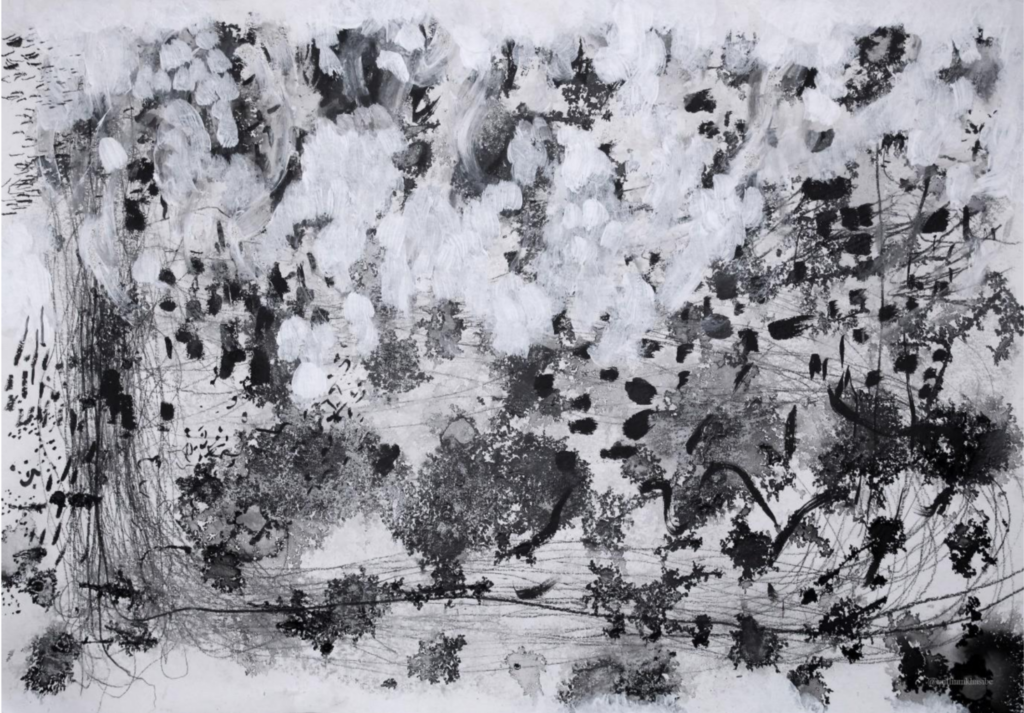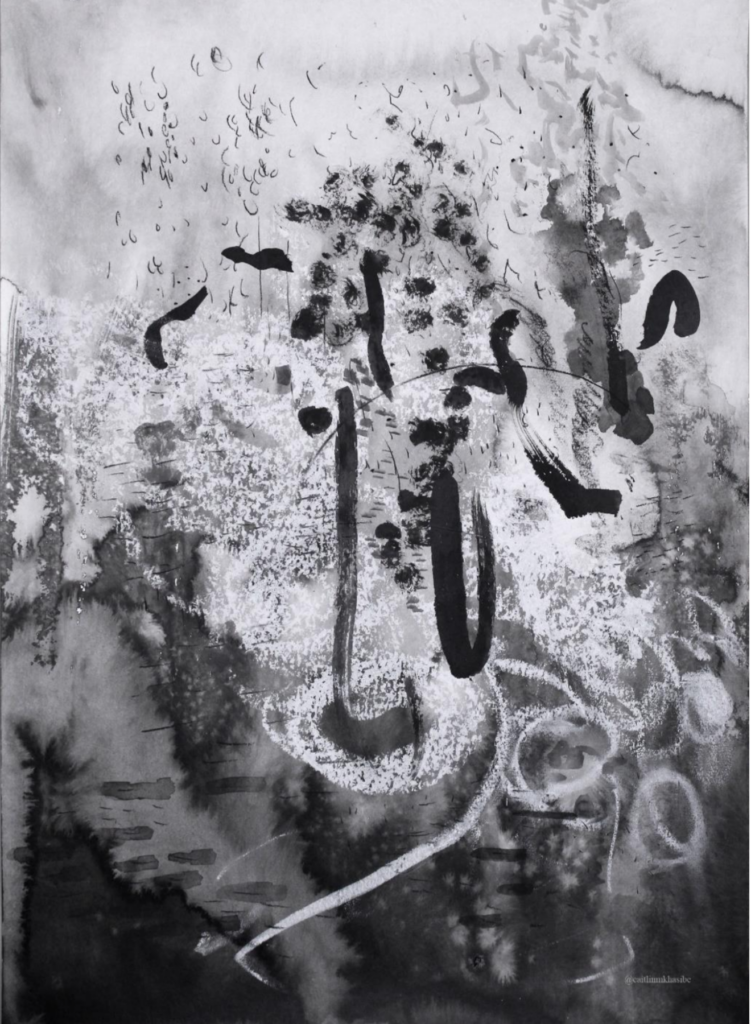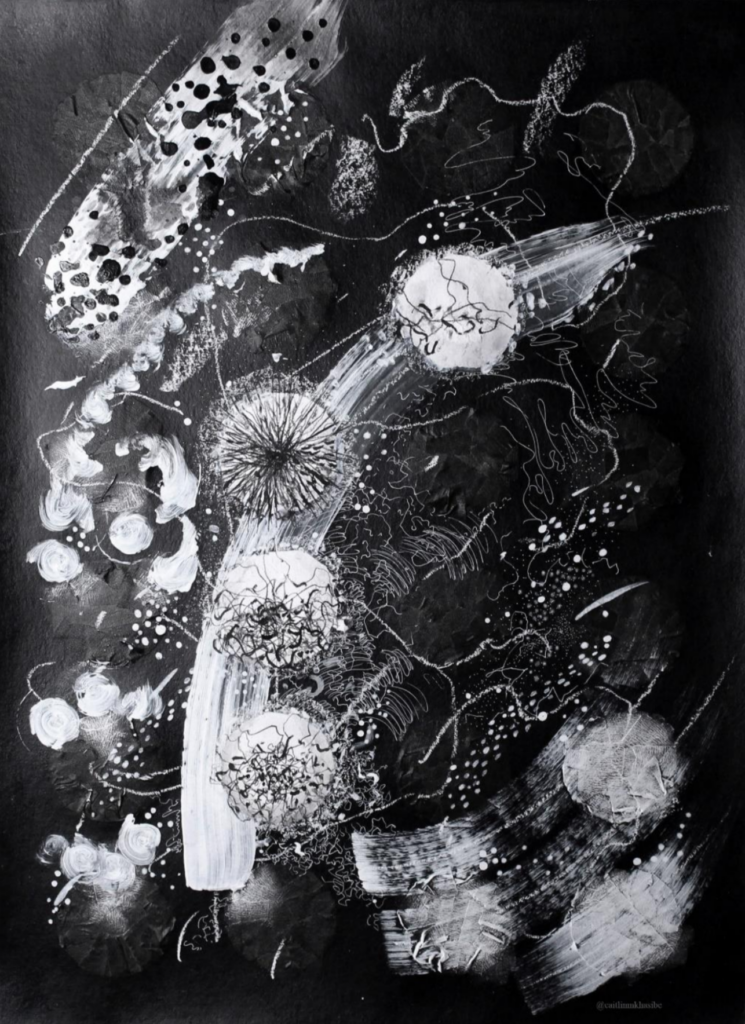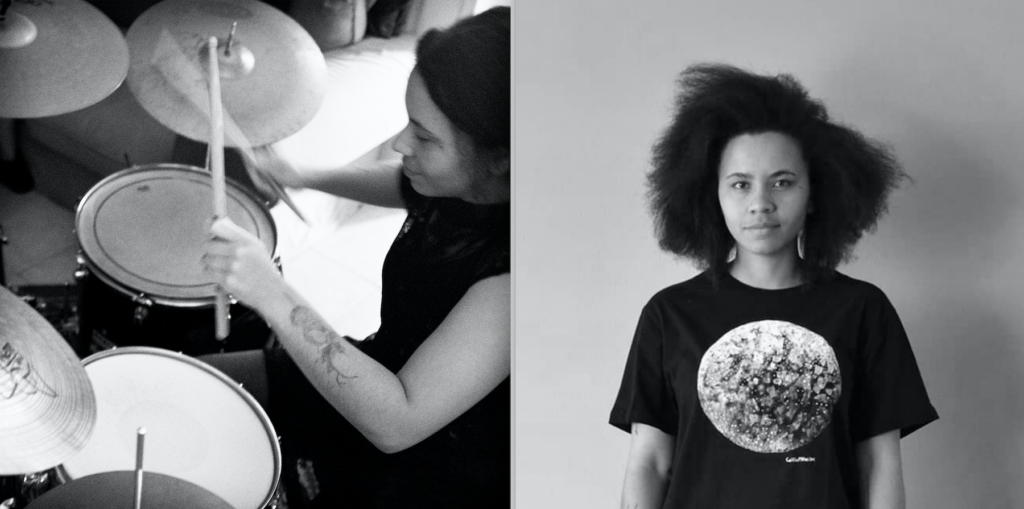‘The Intersection of Sight and Sound’ | Cape Town, South Africa
South African musician and visual artist Caitlin Mkhasibe’s creative work can be found at the intersection of sight and sound. Emergent Art Space has previously featured her work, and we were thrilled to catch up with her again in May during the ‘Synesthesia and the Student’ virtual symposium. We learned about the latest iteration of her growing body of work inspired by investigations into synesthesia, and the three new pieces made in response to varied landscapes and sonic environments. Here, she shares her artwork and symposium video presentation that include field recordings and documentation of her compelling research, influences, explorations and creative strategies.
Artist Statement
Caitlin Mkhasibe, created three monochromatic artworks for the May 2022 ‘Synesthesia and the Student’ virtual symposium, hosted by the International Association of Synaesthetes, Artists and Scientists (IASAS). As a form of simulated/ synthetic synesthesia, two of the artworks were created outdoors, in Cape Town, South Africa. Mkhasibe used mark-making to mimic the expansive and meditative sounds of nature and its textures. The works’ mediums consist of charcoal, chalk, vegan acrylic paint and ink, brush, masking tape and gel pen on 300 gsm Hahnemuhle paper.


The two outdoor works are titled, Sonic Portrait of the Sea (2022), done at Kreeftebaai / Crayfish Beach, and Sonic Portrait of a Mountain (2022), done at Silvermine Nature Reserve. These artworks used expressive, abstract marks, rather than figurative representation. The field recordings accompanying these pieces were played in Mkhasibe’s video presentation as part of the ‘Synesthesia and the Student’ symposium. Her talk also included accompanying photographs of the natural spaces, the artist working on her visual response while there and close-up images of the final artworks.

The third artwork made for the symposium is a visual representation of a collaborative sound work done with artist, helo samo, for this year's global Drone Day event, coinciding on 28 May 2022. SenSA (Sonic Exploration Southern Africa) created a compilation of participating musicians, which was live-streamed on Hamsack Radio on the day of the event.
‘Synesthesia & the Student’ Theme
Since high school, Mkhasibe has been a drummer and during her studies at the Michaelis School of Fine Art (at the University of Cape Town) from 2012 – 2015, she was curious about ways of merging sound with visual art. She is not a synaesthete but learned of simulated synesthesia while doing her own research on the intersection of sight and sound.
Neil Harbisson, the first self-acclaimed cyborg, has an implant that reads colour as sound to help navigate his colour blindness and that was of interest to Mkhasibe. With the help of guest lecturer, Niek de Greef, Mkhasibe then did a web-based project where Harbisson’s favourite ‘sounding’ artworks were displayed as he sees them, in black and white, and when the viewer hovered over them with a mouse, they could hear the tones of the various colours. Even though Harbisson is sighted, the choice of focusing on the auditory and how his lifestyle might differ from Mkhasibe’s as a visual artist, was intriguing to Mkhasibe, where, for example, Harbisson chose outfits that ‘sounded’ good.
With this inspiration in mind and after attending an artist presentation by James Webb (a South African artist who creates sound installations) at the art school. Mkhasibe then further created monochromatic sound art during her time at university, notably, Lowest Hearing Frequency Range (2013). Using water and light cymatics, Mkhasibe made a video response to the low vibrations animals hear that are inaudible to humans. The installation was displayed at group exhibitions, such as, ‘Bring Your Own Beamer’ (2014) at Brundyn+ Gallery in Cape Town, ‘Translations’ (2015) on Emergent Art Space, and in 2016 at the Nandalal Bose Gallery in the Rabindranath Tagore Centre, Indian Council for Cultural Relations (ICCR) in India. In 2015, as part of her Michaelis School of Fine Art’s, ‘Grad Show’, exhibition titled, And then there was a Subterraneous Hum, with special thanks to Matt Jones, Mkhasibe created an installation on noise pollution in the ocean. Videos of her illustrations were displayed in a room where you could sing to a whale and it would sing back. In 2015, Mkhasibe was one of eight drummers recorded for Untitled (with the sound of its own making) – a solar powered, multi-channel loudspeaker system and audio as part of James Webb’s two solo exhibitions titled, ‘Ecstatic Interference’ (2016), at Blank Projects in Cape Town and ‘We Listen for the Future’ (2016), at the Yorkshire Sculpture Park in Leeds.

While studying, Mkhasibe played in a band, Morning Pages, doing two live performances a month. The performances were soundscapes to projected video and stop-motion visuals created internally which mattered more than the musicians’ visibility to the audience. Until the Covid19 pandemic, Morning pages played at various exhibitions, theatres and live music venues in South Africa.